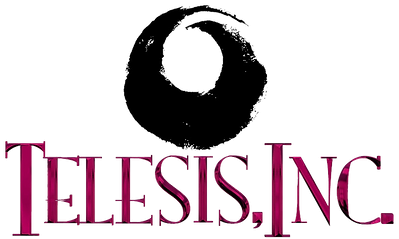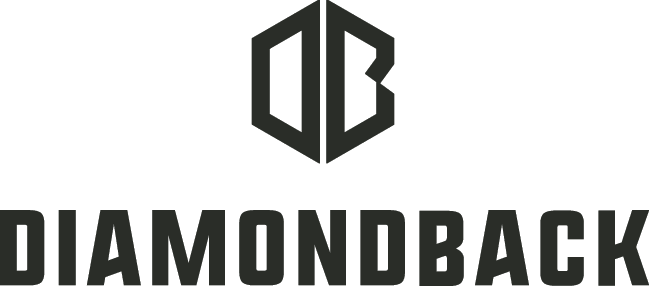Challenges
In many small cities and towns across America, you’ll find a prominent family or two intent on
bettering the community by starting businesses to increase employment, renovating aging
buildings, and taking on other community challenges.
In Lincoln, Nebraska, it’s the Boles and Schafers. The extended family operates various
aspects of Telesis, Inc. The holding company comprises a data security firm, several
restaurants, a microbrewery, real estate, and an urban farming operation.
Telesis, Inc. Operations
Data Security, Inc. is the largest and oldest of Telesis, Inc.’s manufacturing operations.
The 40-year-old company, co-founded by Brian Boles, makes machines that help governments
and companies destroy digital data stored on computer hard disk drives, laptops, server drives,
backup tapes, and audio tapes.
Its degaussers and destruction products are evaluated by the National Security Agency
(NSA) and are listed on the NSA-approved Evaluated Products Lists (EPL), which means
the products can be used by the Department of Defense (DoD).
As the NSA develops new standards for erasing and disposing of data storage media,
Data Security, Inc. has built new machines to maintain its market-leading position. The company
has grown into new markets, helping companies comply with security policies set by the National
Institute of Standards and Technology (NIST), the Federal Information Security Management
Act (FISMA), and privacy legislation like the Gramm-Leach-Bliley Act (GLBA), and the Health
Insurance Portability and Accountability Act (HIPAA).
Data Security, Inc. designs, manufacturers, sells and supports its product line to
customers worldwide.
Restaurant and Brewery
Brian Boles helped his brother Scott achieve a dream of opening a restaurant in 1991.
They recruited a lifelong friend, Jay Jarvis, and opened Nebraska’s first brewpub,
Lazlo’s Brewery & Grill. It remains one of Lincoln’s iconic restaurants.
Years later, they began Empyrean Brewing Co. to produce Lazlo’s beers for distribution at
other retail locations. A second of Lazlo Inc. location opened in 1998, a move that illuminated
the huge energy costs of operating two suburban restaurants.
Achieving Net Zero
This started them down the path of installing geothermal wellfields and Water Source Heat
Pumps to heat and cool their properties. The company has also installed the state’s largest
privately-owned solar array in downtown Lincoln, which is integral to the family’s strategy of
achieving net zero energy usage.
To help meet the families’ sustainable goals, the company decided to repurpose buildings for
urban farming with year-round crop cultivation, using 95 percent less water than traditional
farming, and support traditional farming methods. The newest venture is Avert Vertical
Cultivations. It was launched in 2019.
Running on Legacy Systems
Throughout the companies’ history, operations ran on Macola, a legacy financial system
Telesis, Inc. had spent considerable effort and cost to customize and use with additional
third-party systems.
Executives augmented Macola with spreadsheets and third-party applications.
The disconnected systems required a lot of manual data entry.
Darren Parrott, Director of Finance and Administration, juggled four Macola tenants and
found allocating shared costs to the correct entities cumbersome. Reconciling errors wasted
a lot of time, and so did balancing accounts. It was difficult to ascertain the cost of goods
sold for the manufacturing operations, and inventory levels were often incorrect.
“As we were growing, we expanded our administrative staff just to enter invoices and just
do the day-to-day,” Parrott says, explaining they doubled the finance staff to 16 over the years
just to manipulate data.
Inaccurate Inventory
Data Security, Inc. uses different combinations of over 3,000 parts in its machines, often
doubly-allocated parts, leaving some out of stock, which sometimes delayed production.
“We put together a solid forecast every year, and we have products that cross utilize parts,
but if you said you were going to build 150 units in a year, that inventory had to be taken out
right away,” says Eric Schafer, Telesis, Inc. President. If not, someone else in manufacturing
might use them. “There were times where nobody knew when we were actually out of an
inventory item that kept us from continuing to build,” he says.
Creating reports for analysis involved exporting data from Macola and other systems into
Excel. “The length of time it took to export to Excel was excessive,” Eric says. “You would
literally sit at your desk waiting five, 10 minutes, for the data to refresh, sometimes even just
to open. We had too many executives having their time wasted.” In an attempt to remedy the
situation, they decided to limit a data refresh to 6 a.m., “but that’s not an effective way to run
a company,” he says.
Adds Renee Schafer, Director of Operations at Data Security, Inc., “There was a certain
amount of data in Macola, but it was hard to update. The minute you had a change, or you
needed to change a product, you had to time it right. You couldn’t change it live on the spot
or have revisions. That was impossible. So, we had a lot of Excel spreadsheets, and a lot of
different tracking.”
Data Security, Inc. used Microsoft Access as a CRM, which was highly customized. According
to Renee, Microsoft hasn’t supported the program in years, but executives couldn’t find a new
CRM that allowed the customization it needed. The program didn’t provide the data or insights
required for sales as the companies grew.
Restaurant Inefficiencies
Telesis, Inc. has four restaurants that see more than 1 million guests annually. Collectively,
they represented about 80 percent of the manual transactions. In addition to those
transactions, food vendor invoices were manually entered, and the vendors showed up
two to four times a week to replenish the food and beverages.
“All of our vendor invoices were entered manually into a system that was slow,” says Eric.
“We didn’t have a good flow to do that. We had six people entering data. The thing that kept
moving was the date we closed an end of the month. You can’t make decisions if January’s
not closed out until March or April.”
It would take the restaurant managers three days to enter the prior weeks’ transactions and
reconcile employee food comps, says Parrott.
Entering expense reports from any of the companies was a manual, time-consuming task
requiring an executive to download their credit card statement and manually enter items into
a spreadsheet. The spreadsheet was then sent to the accounting team that re-entered the
information into Macola.
“We’re limited and that became expensive quickly,” Eric says.
 Canada (English)
Canada (English)
 Colombia
Colombia
 Caribbean and Puerto Rico
Caribbean and Puerto Rico
 Ecuador
Ecuador
 India
India
 Indonesia
Indonesia
 Ireland
Ireland
 Malaysia
Malaysia
 Mexico
Mexico
 Panama
Panama
 Peru
Peru
 Philippines
Philippines
 Singapore
Singapore
 South Africa
South Africa
 Sri Lanka
Sri Lanka
 Thailand
Thailand
 United Kingdom
United Kingdom
 United States
United States








